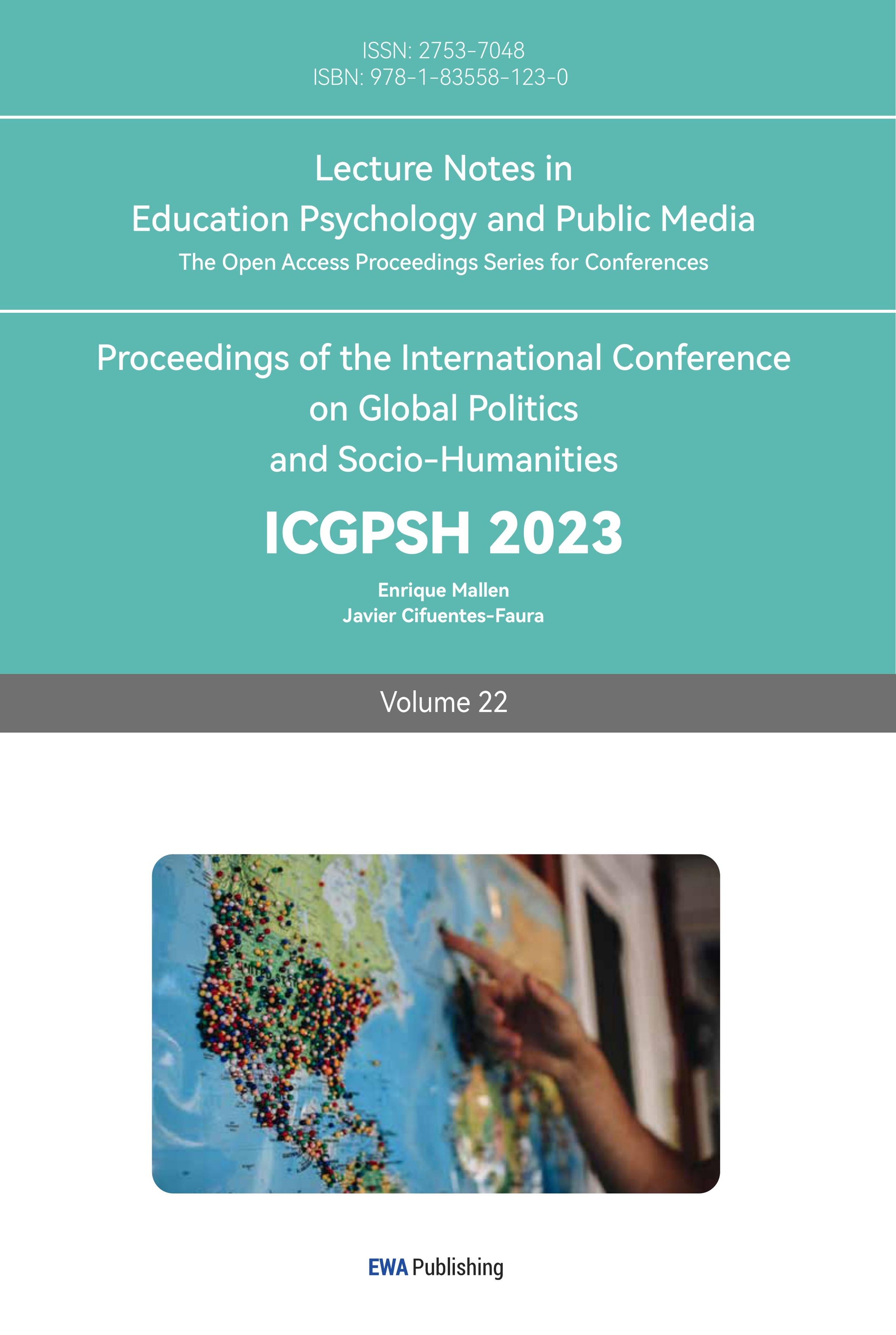References
[1]. Süner, A. (2020). On the Contribution of Tenniel’s Illustrations to the Reading of the Alice Books. Children’s Literature in Education, 51, 41-62.
[2]. Smith, V. (2015). The Woman Who Drew Narnia: Through the Wardrobe with Pauline Baynes. Horn Book Magazine, 91(5), 48–53.
[3]. Coleman, Kelsi. “History, Methods, and Psychology of Illustrations in Children’s Literature.” (2023).
[4]. Krohn, L. S. (2022). “ Visual Bridging” to and from Literary Texts: A Theoretical Analysis (Doctoral dissertation, Oklahoma State University).
[5]. Brookshire, J., Scharff, L. F., & Moses, L. E. (2002). The influence of illustrations on children’s book preferences and comprehension. Reading psychology, 23(4), 323-339.
[6]. Greenhoot, A. F., Beyer, A. M., & Curtis, J. (2014). More than pretty pictures? How illustrations affect parent-child story reading and children’s story recall. Frontiers in psychology, 5, 738.
[7]. O’Keefe, E. J., & Solman, R. T. (1987). The influence of illustrations on children’s comprehension of written stories. Journal of Reading Behavior, 19(4), 353-377.
[8]. Guo, D.B., et al. “Do you get the picture? A meta-analysis of the effect of graphics on reading comprehension.” AERA Open 6.1 (2020): 2332858420901696.
[9]. Vekiri, I. (2002). What is the value of graphical displays in learning?. Educational psychology review, 14, 261-312.
[10]. Lewis, C. S. (1956). Surprised by joy: The shape of my early life. Houghton Mifflin Harcourt.
Cite this article
Sun,X. (2023). The Influence of Illustrations in Literary Texts on Children's Reading Comprehension. Lecture Notes in Education Psychology and Public Media,22,204-212.
Data availability
The datasets used and/or analyzed during the current study will be available from the authors upon reasonable request.
Disclaimer/Publisher's Note
The statements, opinions and data contained in all publications are solely those of the individual author(s) and contributor(s) and not of EWA Publishing and/or the editor(s). EWA Publishing and/or the editor(s) disclaim responsibility for any injury to people or property resulting from any ideas, methods, instructions or products referred to in the content.
About volume
Volume title: Proceedings of the International Conference on Global Politics and Socio-Humanities
© 2024 by the author(s). Licensee EWA Publishing, Oxford, UK. This article is an open access article distributed under the terms and
conditions of the Creative Commons Attribution (CC BY) license. Authors who
publish this series agree to the following terms:
1. Authors retain copyright and grant the series right of first publication with the work simultaneously licensed under a Creative Commons
Attribution License that allows others to share the work with an acknowledgment of the work's authorship and initial publication in this
series.
2. Authors are able to enter into separate, additional contractual arrangements for the non-exclusive distribution of the series's published
version of the work (e.g., post it to an institutional repository or publish it in a book), with an acknowledgment of its initial
publication in this series.
3. Authors are permitted and encouraged to post their work online (e.g., in institutional repositories or on their website) prior to and
during the submission process, as it can lead to productive exchanges, as well as earlier and greater citation of published work (See
Open access policy for details).
References
[1]. Süner, A. (2020). On the Contribution of Tenniel’s Illustrations to the Reading of the Alice Books. Children’s Literature in Education, 51, 41-62.
[2]. Smith, V. (2015). The Woman Who Drew Narnia: Through the Wardrobe with Pauline Baynes. Horn Book Magazine, 91(5), 48–53.
[3]. Coleman, Kelsi. “History, Methods, and Psychology of Illustrations in Children’s Literature.” (2023).
[4]. Krohn, L. S. (2022). “ Visual Bridging” to and from Literary Texts: A Theoretical Analysis (Doctoral dissertation, Oklahoma State University).
[5]. Brookshire, J., Scharff, L. F., & Moses, L. E. (2002). The influence of illustrations on children’s book preferences and comprehension. Reading psychology, 23(4), 323-339.
[6]. Greenhoot, A. F., Beyer, A. M., & Curtis, J. (2014). More than pretty pictures? How illustrations affect parent-child story reading and children’s story recall. Frontiers in psychology, 5, 738.
[7]. O’Keefe, E. J., & Solman, R. T. (1987). The influence of illustrations on children’s comprehension of written stories. Journal of Reading Behavior, 19(4), 353-377.
[8]. Guo, D.B., et al. “Do you get the picture? A meta-analysis of the effect of graphics on reading comprehension.” AERA Open 6.1 (2020): 2332858420901696.
[9]. Vekiri, I. (2002). What is the value of graphical displays in learning?. Educational psychology review, 14, 261-312.
[10]. Lewis, C. S. (1956). Surprised by joy: The shape of my early life. Houghton Mifflin Harcourt.









